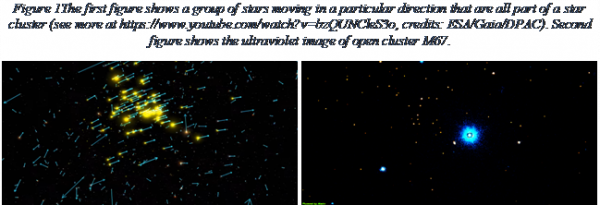 Indian Astronomers have developed a new method based on Machine Learning that can identify cluster stars– assembly of stars physically related through common origin, with much greater certainty. The method can be used on clusters of all ages, distances, and densities. The method has been used to identify hundreds of additional stars for six different clusters up to 18000 light-years away and uncover peculiar stars.
Indian Astronomers have developed a new method based on Machine Learning that can identify cluster stars– assembly of stars physically related through common origin, with much greater certainty. The method can be used on clusters of all ages, distances, and densities. The method has been used to identify hundreds of additional stars for six different clusters up to 18000 light-years away and uncover peculiar stars.
Studying stars and how they evolve is the cornerstone of astronomy. But understanding them is difficult since they are observed at different ages. A star cluster is, therefore, a great place to study stars. All stars in a star cluster have approximately the same age and chemistry, so any differences seen can be attributed to the peculiarities in individual stars with certainty. As the clusters are part of the Milky Way, there are many stars between us and the cluster, so it isn’t easy to identify and select the stars of a particular cluster.
A team of Astronomers from Indian Institute of Astrophysics (IIA), an autonomous institute of the Department of Science & Technology, Government of India used European Space Agency (ESA)’s recently released Gaia Early Data Release 3 (EDR3) which gives very accurate information about the brightness, parallax, and proper motion of more than a billion stars with an accuracy of 1 milli-arc-second (equivalent to seeing a person standing on the moon) to pick out the stars that are cluster members.
IIA team identified the crucial measurements for this task and understood the complex relationship between these parameters, using a machine learning technique called Probabilistic Random Forest. This uses a combination of parallax, proper motion, temperature, brightness and other parameters to classify each star as a cluster member or a non-member. The IIA team trained their algorithm using the most likely members from a model called the Gaussian Mixture Model, which can identify clumps of co-moving stars. The Probabilistic Random Forest algorithm then learns how to identify a typical cluster member star and efficiently takes out stars that share only similar proper motions or only similar velocities as the cluster itself. They used 10 parameters to identify members, after performing a trade study of all available parameters in the catalogue.
IIA team used the catalogue of members to identify the hottest stars in the six clusters using ultraviolet images from Ultra-Violet Imaging Telescope (UVIT) on the Indian space observatory ‘AstroSat’. This work has been published in the scientific journal ‘Monthly Notices of the Royal Astronomical Society’. Their work has already resulted in discovering hot subdwarf-B type stars (compact stars that are very rare) in open cluster King 2. A research paper on the same has been accepted for publication in the ‘Journal of Astrophysics and Astronomy’. The tool helped confirm that these stars are indeed part of the cluster, though showing unexpected properties.
The newly developed method can now identify cluster stars with much greater certainty and pinpoint individual stars that behave differently from their siblings. The team will apply the algorithms to more clusters in the future.
“Manual identification of stars belonging to a star-cluster is a daunting task owing to an armload of data to be analyzed. The new Artificial Intelligence based algorithm is very promising in automating and greatly speeding this process and may also find uses in other areas of analysis of patterns in biology and materials science,” said Prof Ashutosh Sharma, Secretary, DST.

